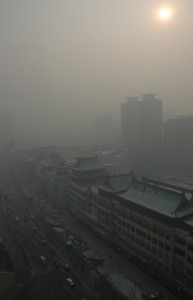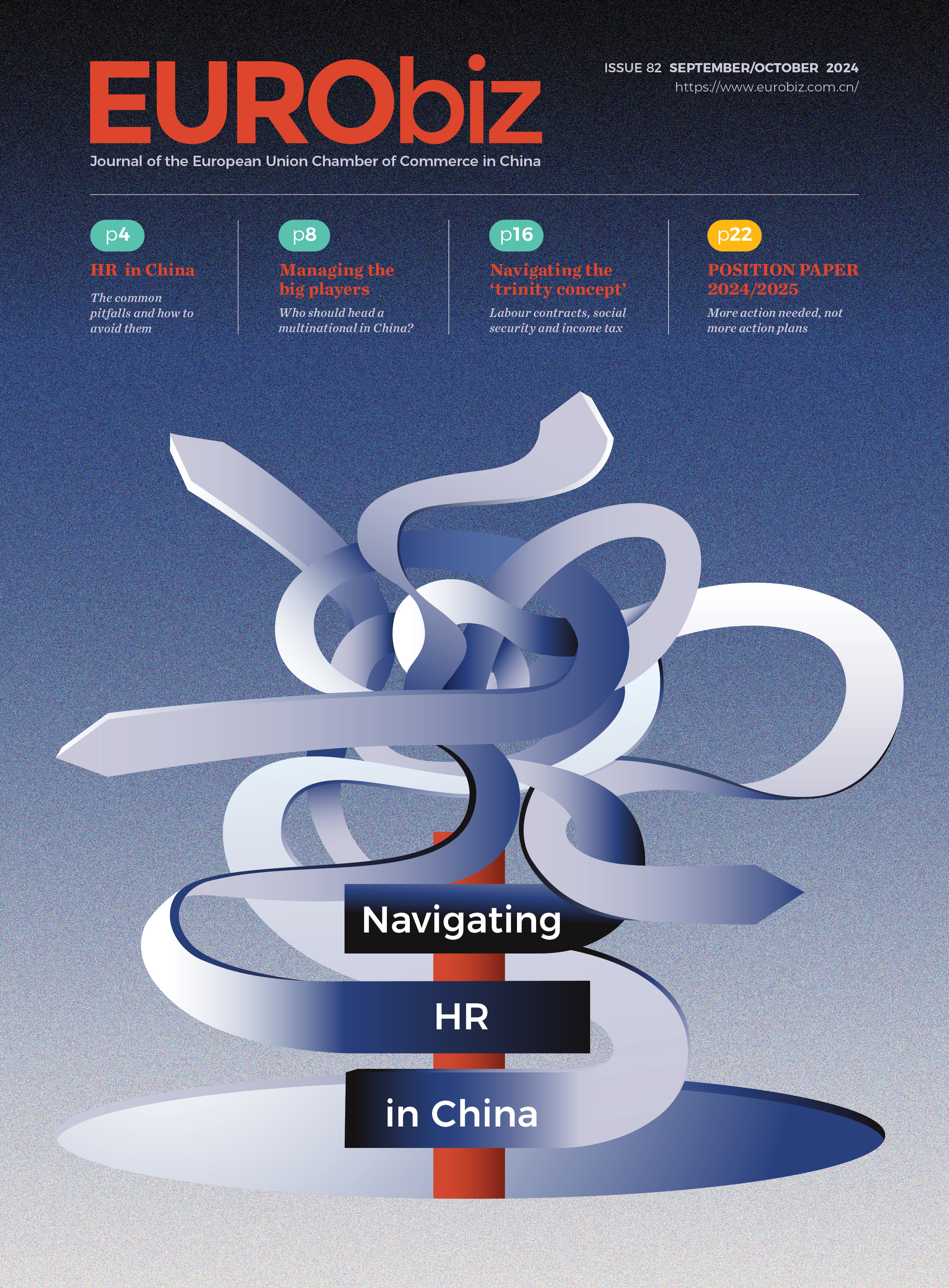Air pollution is nothing new to people living in China, but the recent extreme conditions witnessed across the eastern provinces placed the issue under the scrutiny of international media. On Saturday 12th January, 2013, conditions—referred to by some as the “airpocalypse”—peaked, with Beijing’s real-time, air-quality index soaring above the magic value of 500 μg/m3 (anything above this is recorded as “beyond index”), with the US Embassy reporting a recorded a level of 886μg/m3. Beijing, apparently, was not even the worst-affected city.
Yang Jin and Alban Renaud of Adamas law firm say that China has steadily been addressing the issue of air quality by introducing improved legislation, and believe this recent environmental catastrophe has had the positive effect of pushing the agenda at Central Government level. However, as they discuss below, the real challenge is not just enacting this legislation but also making sure that it is properly enforced.
 Clean air is considered to be a basic requirement for human health and well-being. For many years, people living in China have been facing severe problems with air quality. This situation was brought into sharp focus in mid-January when eastern China was cloaked in a thick blanket of smog, which cut visibility and sent people flocking to buy face masks in an effort to protect themselves and their families.
Clean air is considered to be a basic requirement for human health and well-being. For many years, people living in China have been facing severe problems with air quality. This situation was brought into sharp focus in mid-January when eastern China was cloaked in a thick blanket of smog, which cut visibility and sent people flocking to buy face masks in an effort to protect themselves and their families.
The recent air quality went far beyond the level designated as ‘hazardous’; official readings taken in Beijing during the weekend of 12th—13th January exceeded 700μg/m3 on the air quality index (AQI) that measures PM2.5, according to Beijing Municipal Environmental Monitoring Centre (BEMC). To put these figures in perspective the BEMC considers a level of over 300μg/m3 to be so hazardous that everyone may experience serious effects, while the World Health Organisation considers a PM2.5 index of more than 25μg/m3 as being unacceptable.[1]
The main contributor to the problem is PM2.5—particles less than 2.5 micrometres in diameter or roughly 1/20th the width of an average human hair—also known as fine particles. The reason they are considered to be the most harmful to health is because, due to their small size, they can be easily absorbed deep into the lungs where they can decrease lung function and cause severe respiratory problems. Sources of fine particles include all types of combustion activities (motor vehicles, power plants, coal and wood burning, etc.) and certain industrial processes.
Although much of the time air pollution is invisible, its effects are not. Millions of people in China have to breathe dirty air, the consequences of which can permanently affect their lives in the form of respiratory infections, heart disease and even lung cancer. These long-term, sometimes fatal consequences are borne by the public, but they also place an inevitable strain on China’s healthcare infrastructure too. This legacy left by nearly three decades of unfettered economic growth has been ignored for too long. The health of China’s population is at risk: cardio-vascular disease is China’s biggest contributor to mortality; respiratory disease is just behind, responsible for an alarming 15 per cent of the country’s total deaths every year.
 The root of the problem lies in the rate of China’s urbanisation and industrial expansion. With an ever-increasing demand for energy, China has had to build new coal-fired power plants at an astonishing rate. Today, coal provides not only 80 per cent of China’s electricity and 70 per cent of its total energy, but also accounts for a large proportion of its air pollutants. In addition to this China also needs to address the issue of pollutants from motor vehicles, which are another major contributor to PM2.5 levels.
The root of the problem lies in the rate of China’s urbanisation and industrial expansion. With an ever-increasing demand for energy, China has had to build new coal-fired power plants at an astonishing rate. Today, coal provides not only 80 per cent of China’s electricity and 70 per cent of its total energy, but also accounts for a large proportion of its air pollutants. In addition to this China also needs to address the issue of pollutants from motor vehicles, which are another major contributor to PM2.5 levels.
There is no overnight solution to air pollution, but to improve air quality the path is straightforward: it requires government legislative action, transparency in information and enforcement of the law.
The amount of work the Chinese Government put into developing its legal framework for air quality improvement has been accumulating. The overall framework for China’s environmental legislation is the Environmental Protection Law (EPL 1989), which provides basic principles for protection of the air. Since the promulgation of the EPL 1989, China’s environmental law framework has expanded to include many major statutes and countless State Council regulations, standards, and other legal documents. The major laws now governing air pollution include the Law on Prevention and Control of Atmospheric Pollution and the Environmental Impact Assessment Law.
In recent years frequently polluted skies, compounded by complaints from citizens across the country, have accelerated the rate at which legislation is being implemented. In May 2010, The State Council, for first time outside of the special provisions for the Beijing Olympics and Shanghai Expo, released guiding opinions and set up a structure for improving air quality across multiple provinces.[2] These guidelines include stricter air quality and emission standards for Beijing, Shanghai and Guangzhou.
On 29th February, 2012, the Ministry of Environmental Protection (MEP) and the State Administration of Supervision, Inspection and Quarantine jointly released the official (trial) revisions to the Ambient Air Quality Standards. The new Standards, which will take effect on 1st January, 2016, include mandatory monitoring of PM2.5. Because of the ease with which PM2.5 particles are absorbed into the lungs, measuring them is considered a more accurate reflection of air quality.
The MEP then followed with announcements that PM2.5 would be additionally measured in all four municipalities, 27 provincial capitals, and key economic regions such as Beijing-Tianjin-Hebei, the Pearl River Delta, and the Yangtze River Delta. In 2013, 113 key cities and environmental protection model cities will be added.
The undeniable effects of deteriorating air quality has led to the media putting increased pressure on the Chinese Government to address the underlying causes, which in turn has led to improved transparency of information. During the heavily polluted period in mid-January, not only did the Beijing local government release an unprecedented alert warning vulnerable people to stay indoors, they also activated a new plan restricting construction and industrial activity, curbing vehicle use by government officials and ordering schools to limit outside activity. This is a positive sign.
Of course, the success or failure of laws depends on how effectively they are enforced, especially at the local level. Enforcement now still remains the real problem in China. The new draft EPL stresses that the government should play the leading role in environmental protection and officials will be subject to administrative punishment if they fabricate environmental statistics or refuse to release information that should be published. Regardless of this new trend of law, the time-honoured method employed by authorities to deal with public complaints, and the principle of placing development ahead of all other concerns, including ecological, are not going to be changed overnight.
The silver lining to the recent extremes of pollution is that it has forced the government to finally acknowledge the elephant in the room. Having breathed foul air for such a long time, Chinese society is finally coming to a consensus: although China will have to walk a long and hard road before it reaches clean, blue skies, the costs of a ‘pollute first control later’ strategy are way too high, and the government should not hesitate to take action.
ADAMAS is a European law firm and the oldest existing foreign law firm licensed by the Ministry of Justice of PRC to practice in the field of law in China. The Environmental Affairs Team of elite lawyers enjoys a high reputation in their field.
[1] WHO Air Quality Guidelines 2005
[2] Notice of the General Office of the State Council about Forwarding Guiding Opinions on Pushing Forward the Joint Prevention and Control of Atmospheric Pollution to Improve the Regional Air Quality Developed by the Ministry of Environment Protection and Relevant Departments


Recent Comments